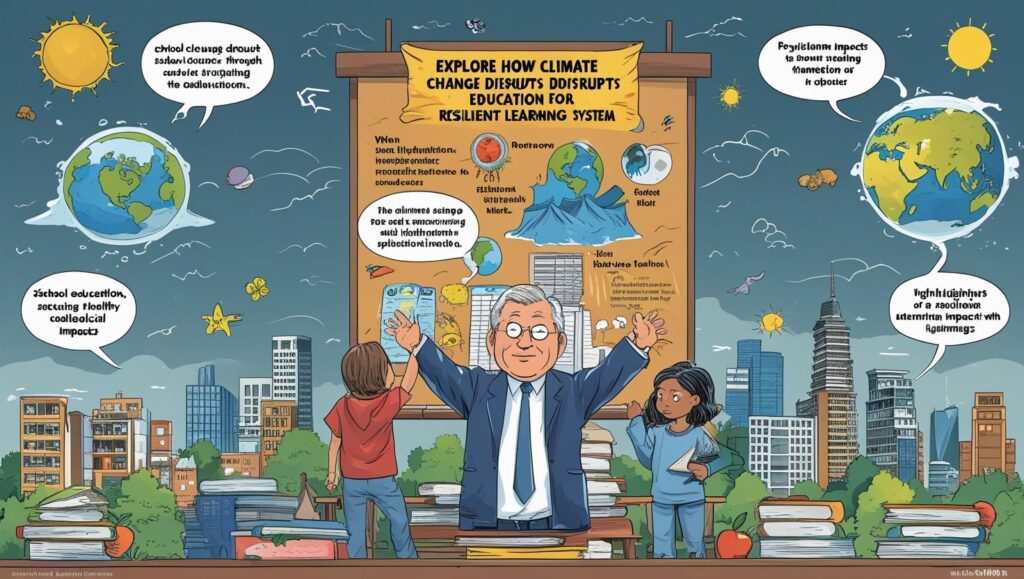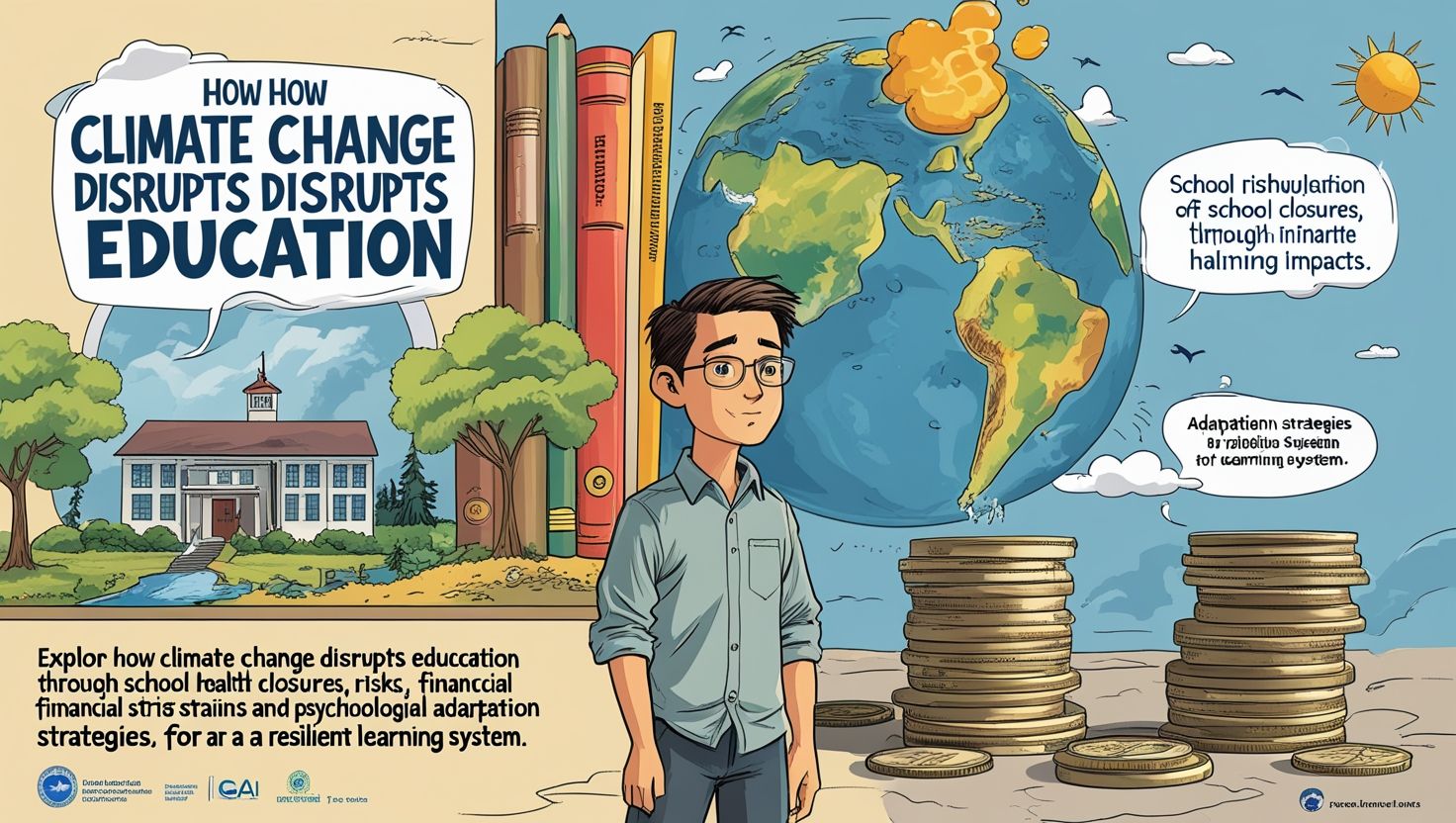Introduction
Impact of Climate Change on Education, Climate change is one of the most pressing global challenges of the 21st century, with far-reaching consequences for various sectors, including education. Rising temperatures, natural disasters, and changing weather patterns significantly impact schools, students, and the overall learning environment. This article explores the impact of climate change on education, focusing on disruptions to schooling, health concerns for students, financial strains, and potential solutions.
Disruptions to Schooling
One of the most immediate effects of climate change on education is the disruption of schooling due to extreme weather events. Floods, hurricanes, wildfires, and heatwaves have led to school closures and displacement of students worldwide. These disruptions hinder students’ academic progress and increase dropout rates, particularly in vulnerable regions. For example, in countries like Bangladesh and the Philippines, frequent flooding forces schools to shut down for extended periods, leaving children with limited learning opportunities.
Additionally, students who are displaced due to climate-related disasters often struggle to reintegrate into the education system. Many of these children are forced to migrate with their families, leading to interruptions in their studies and difficulties adapting to new curricula in different regions or countries.
Health Concerns for Students
Climate change has significant health implications that directly affect students’ ability to learn. Increased air pollution and rising temperatures contribute to respiratory illnesses such as asthma, which can lead to higher absenteeism. Additionally, extreme heat can cause dehydration and heat exhaustion, making it difficult for students to concentrate in classrooms.
Vector-borne diseases such as malaria and dengue fever are also on the rise due to changing climatic conditions. These illnesses disproportionately affect students in developing countries, further exacerbating educational inequalities. Schools with inadequate infrastructure, such as poor ventilation and lack of clean water, are particularly vulnerable to these health challenges.

Financial Strains on Education Systems
Climate change places a financial burden on education systems, particularly in developing countries with limited resources. Governments and communities must allocate significant funds to rebuild schools damaged by natural disasters. This diverts resources away from educational development, teacher training, and curriculum improvements.
Moreover, parents in climate-affected areas may struggle financially, leading to reduced investment in their children’s education. Families facing economic hardships due to climate change-induced agricultural losses or job instability may prioritize basic survival over schooling. In some cases, children may be forced into labor to support their families, further impacting their educational prospects.
Psychological and Social Impacts
Beyond physical disruptions, climate change also affects students’ mental well-being. The anxiety and stress caused by natural disasters, displacement, and uncertainty about the future can lead to lower academic performance and emotional distress. Students living in high-risk areas often experience trauma from witnessing or experiencing climate-related disasters.
Additionally, the social fabric of communities is often disrupted due to climate-induced migration. When families are forced to relocate, children may face challenges adjusting to new schools, languages, and social environments. This can lead to lower self-esteem and reduced motivation to continue education.
Adaptation Strategies and Solutions
While climate change poses significant challenges to education, various adaptation strategies can help mitigate its impact. Some of these include:
- Infrastructure Improvements: Governments should invest in climate-resilient school buildings that can withstand extreme weather conditions. Elevated schools in flood-prone areas, better insulation for heat-prone regions, and improved ventilation can enhance learning environments.
- Disaster Preparedness Education: Schools should incorporate climate change awareness and disaster preparedness into their curricula. Educating students on emergency response and environmental sustainability can empower them to contribute to climate solutions.
- Flexible Learning Models: Online education and distance learning programs can help minimize disruptions caused by extreme weather. Governments and educational institutions should develop robust digital learning infrastructures to ensure continuity in education during school closures.
- Health and Safety Measures: Schools should implement policies to safeguard students’ health, such as improved sanitation, access to clean drinking water, and proper ventilation to reduce the impact of heatwaves and air pollution.
- Financial Support for Affected Families: Governments and NGOs should provide financial assistance to families affected by climate change to ensure that children remain in school. Scholarship programs and conditional cash transfers can help alleviate financial burdens.
Conclusion
Climate change is a growing threat to global education systems, impacting students, teachers, and infrastructure. The challenges range from disrupted schooling and health risks to financial strain and psychological distress. However, with proactive policies, resilient infrastructure, and adaptive learning models, education can withstand these challenges. Addressing the intersection of climate change and education is essential for building a sustainable future and ensuring that all children have access to quality learning opportunities despite environmental uncertainties.

10 thoughts on “Impact of Climate Change on Education”
Comments are closed.